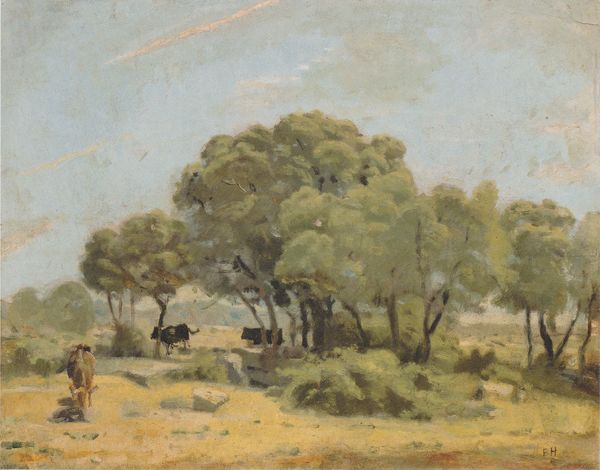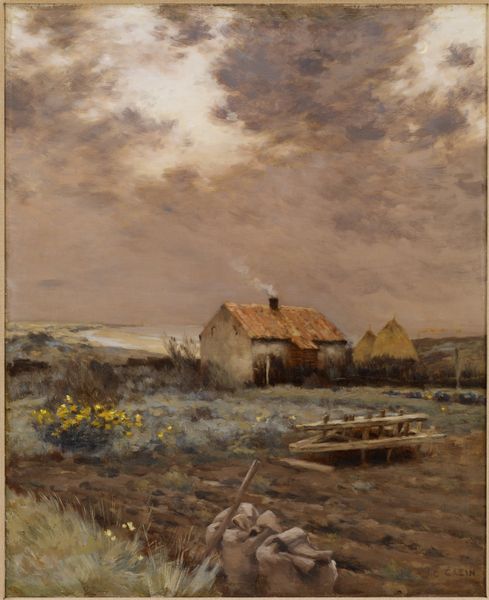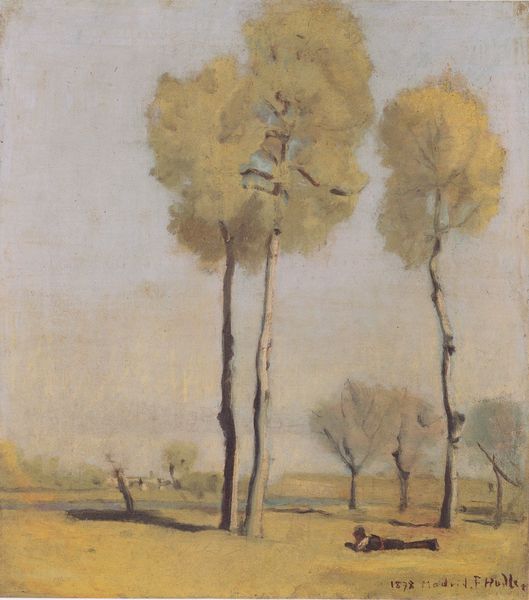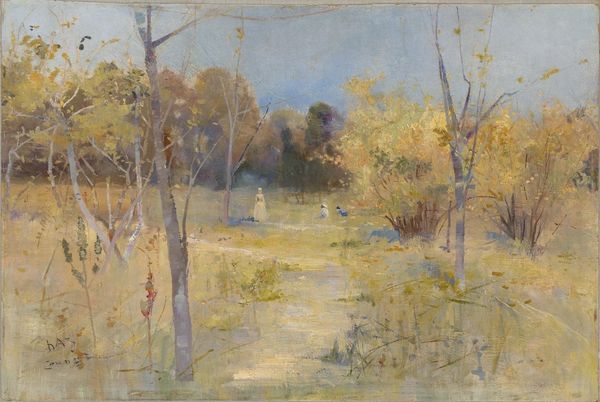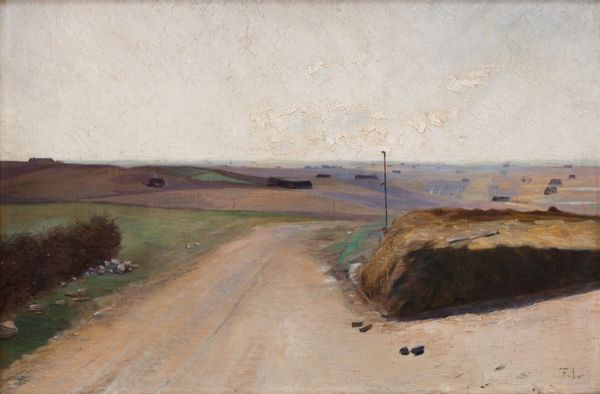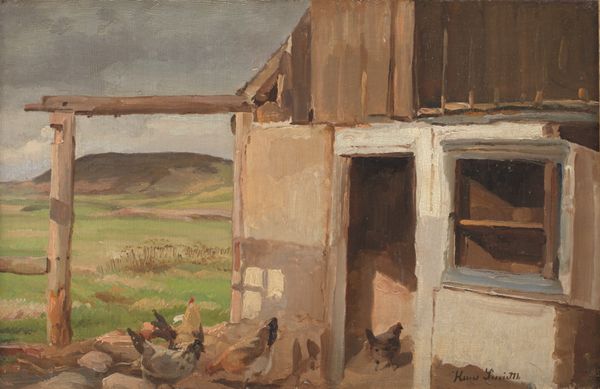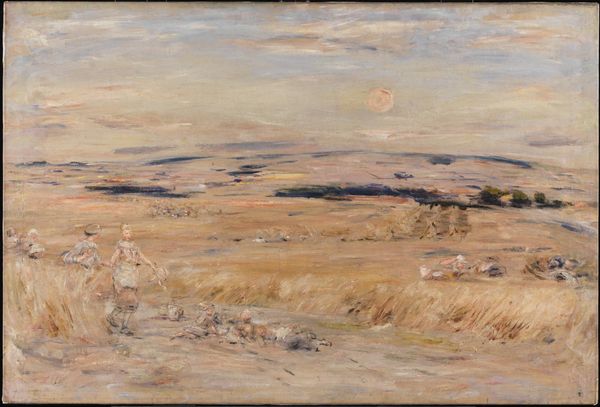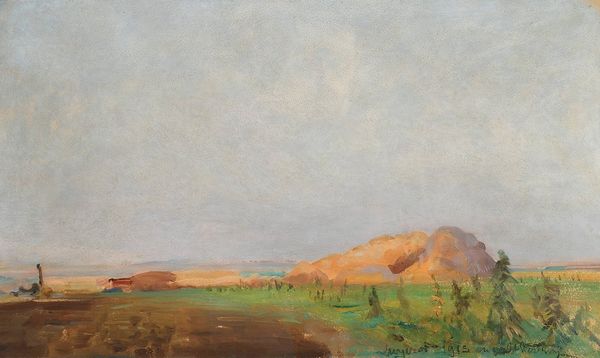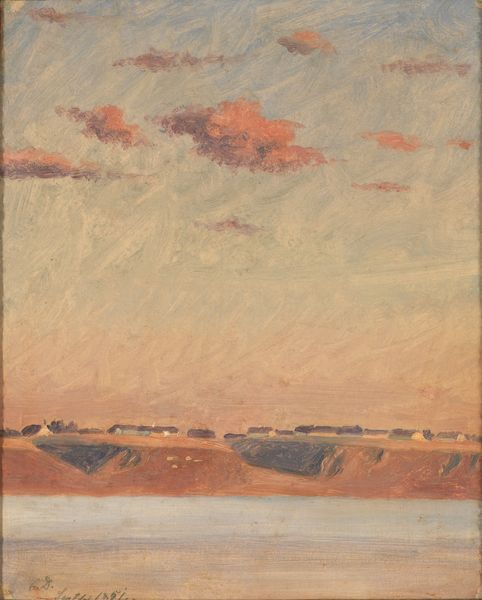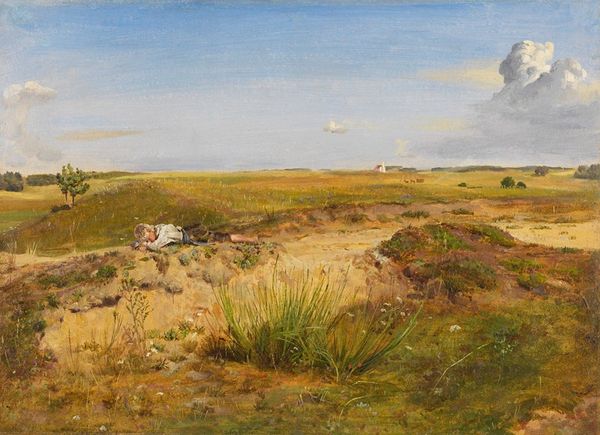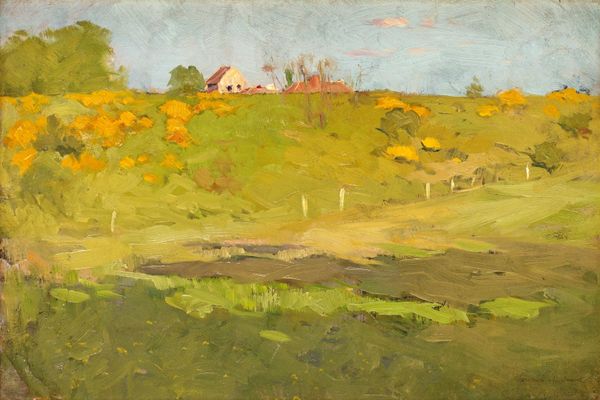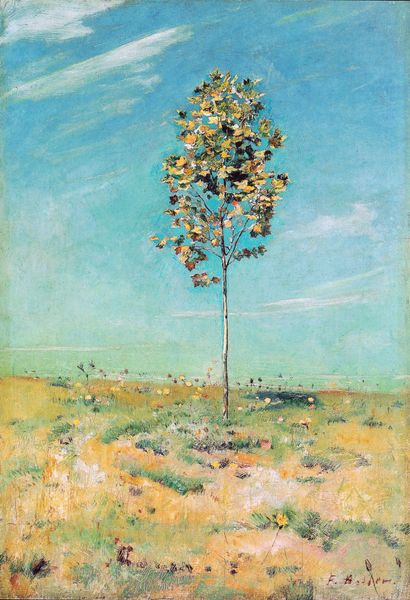
Copyright: Public domain
Charles Conder painted ‘Under a Southern Sun (Timber Splitter's Camp)’ in Australia, at a time when it was still a colony of the British Empire. This painting, with its bright and airy vista, romanticizes the harsh realities of labour in the Australian outback. The timber splitter's camp, though remote, is rendered as an idyllic scene rather than a depiction of grueling work and social isolation. Conder’s work engages with the artistic conventions of Impressionism that were developed in France. But he uses this imported style to depict a distinctly Australian landscape and its inhabitants. Was Conder's romantic vision simply a reflection of his own privileged background, or did it serve a broader purpose in shaping Australian national identity? To understand Conder’s artistic choices, we can delve into historical accounts of life in timber camps and consider the social and economic forces that shaped the Australian outback during the late 19th century. Only then can we understand the full meaning of art as a product of its time.
Comments
No comments
Be the first to comment and join the conversation on the ultimate creative platform.

